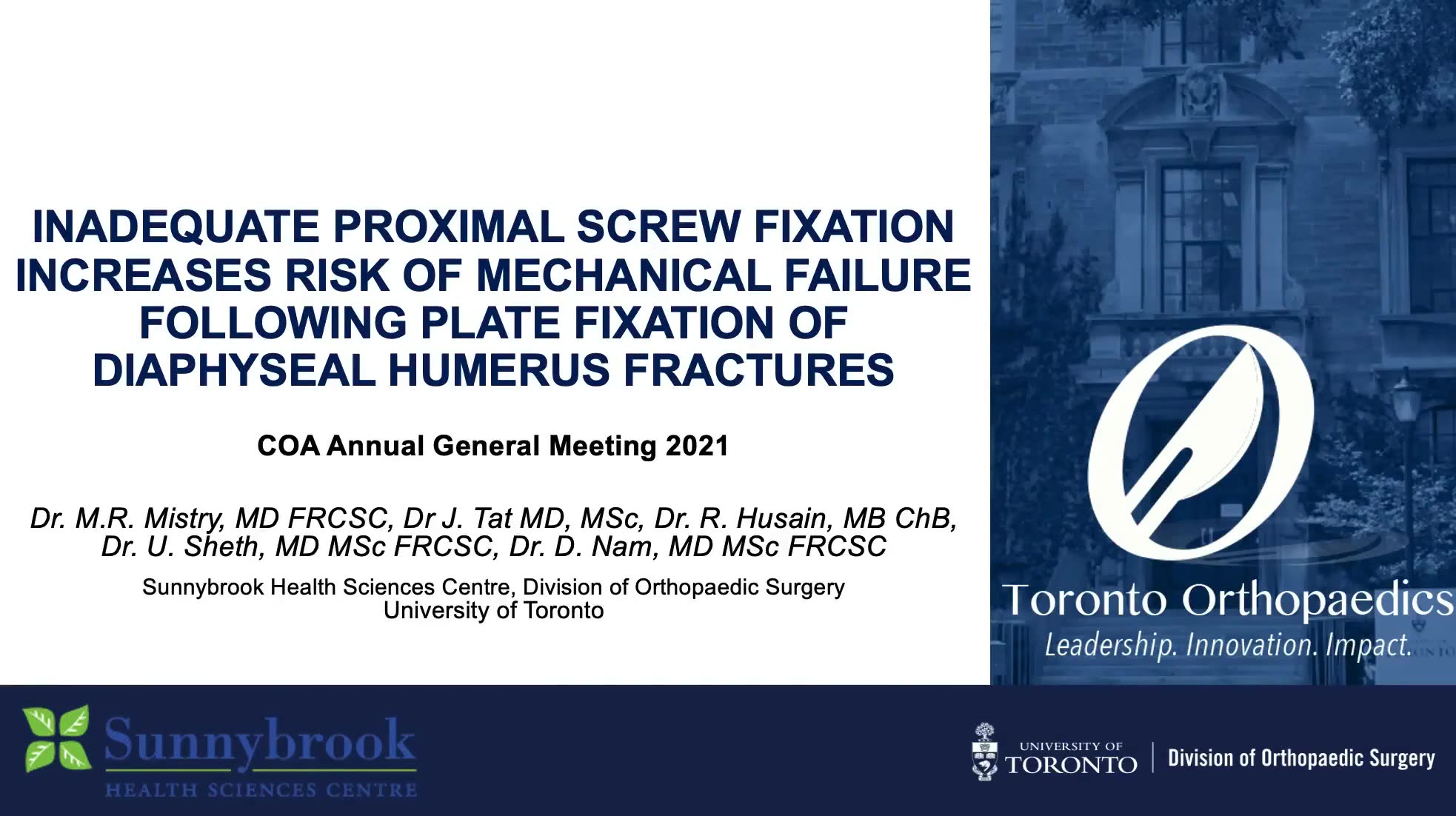Please login to view this media

- Talk
- 15/09/2021
- Canada
Inadequate Proximal Fixation Can Increase Failure Following Plate Fixation of Diaphyseal Humerus Fractures
Description
The transcript is a presentation by Manisha Mistry regarding a study on mechanical failure in diaphyseal humerus fractures treated with operative fixation, specifically focusing on inadequate proximal screw fixation as a contributing factor. Mistry acknowledges the growing trend towards operative fixation in the treatment of these fractures, citing an increase in the rates of surgical intervention due to the need for early mobilization. She emphasizes the importance of identifying risk factors for mechanical failure, which can occur in 6-16% of cases following open reduction and internal fixation (ORIF).
The study involved a retrospective review of patients with AO/OTA class 12 diaphyseal humerus fractures treated operatively, aiming to analyze various characteristics of both patients and their injuries to identify factors associated with failure. Significant findings from the analysis indicated that inadequate proximal fixation—defined as less than eight cortices of fixation—was a main predictor of mechanical failure, particularly in middle and distal third diaphyseal fractures. Mistry illustrates specific cases of mechanical failure, showcasing how improper screw placement and fixation led to complications.
The presentation concludes by recommending that surgical protocols ensure a minimum of eight cortices of fixation, particularly with proximal locations, and underlines the importance of screw placement technique over plate selection in preventing failures. Mistry calls for further biomechanical and prospective clinical studies to deepen understanding of fracture management.